A Place to Sit

I went north last week to see the brand new Library of Birmingham. It’s only been open a few months, and it’s stunning. It’s nice to see something beautiful in this country that isn’t over a hundred years old or a nod to its illustrious past. This is a defiantly modern structure, and I absolutely love it. I made the perhaps ill-advised decision to visit during a school break, but I certainly got to see this library full, busy, and full of noise. So perhaps not a completely terrible decision.
There are many wonderful things in the Library of Birmingham, including a well-designed children’s library and event space, a lovely front lobby where they sell crafts made by local artists, thoughtful (and gender-segretated) prayer rooms, to say nothing of the two beautifully functional roof gardens (the main one, and the secret one). Stunning.
But you can already see where the seams are going to burst for this library. Not enough power, and not enough collaborative spaces. This problem is most obvious in their study spaces.
I have to admit, I hadn’t expected study space to play such an important role in public libraries, but it clearly does. Every public library I’ve visited so far has been packed full of studying students, which certainly makes me feel at home. It’s obviously not a new phenomenon, because each of these libraries has been designed to accommodate them. Canada Water library has it’s charming ring of study space perched along it’s upper floor, Idea Store Whitechapel has it’s little tables up against windows, and the Library of Birmingham has an impressive variety of study spaces.
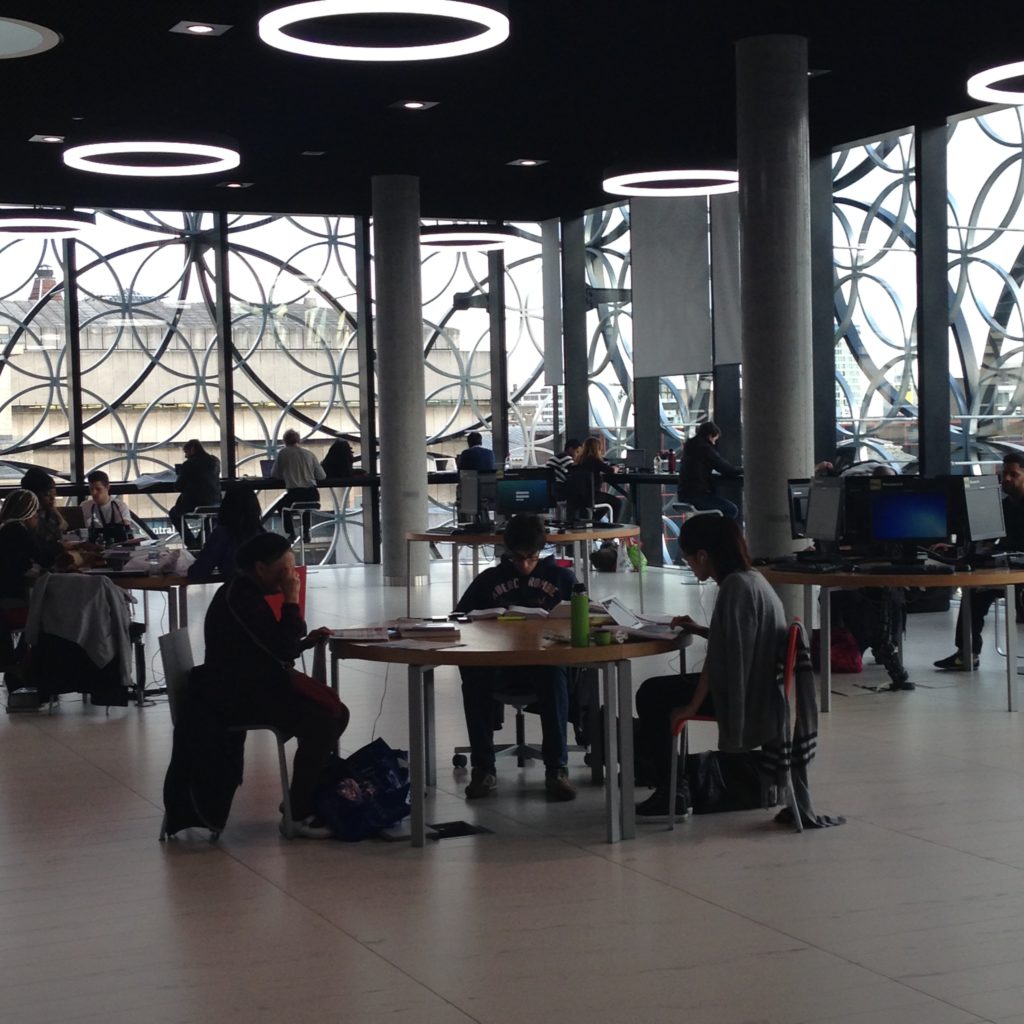
You can see three different kinds of study space here, all of it in use in spite of the unholy racket emanating up from the ground floor. Tables with supplied computers, similar tables minus computers, and the bar seating along the length of those solid glass walls. (I really love bar seating, and apparently I’m not alone in that. I haven’t seen a library without bar seating yet.) All those spaces are well used, but what you can see in this photo is that the fixed computers are perhaps the least well-used part of the space.
Those of us watching computing have been waiting for the moment when the other shoe drops and patrons visibly begin to prefer to use their own computers in public spaces rather than use public terminals. This is a natural development, and frankly I’m surprised it’s not more in evidence back home at UTM. But here, it seems pretty apparent to me that personal computing is just that, and the people of Birmingham have no issue bringing in their own devices and computers. Because there are no chairs around that pod in the middle of the picture, the one with the fixed computers on it. The computers have been left to sit on their own, but the chairs have gone off to places patrons would rather use.
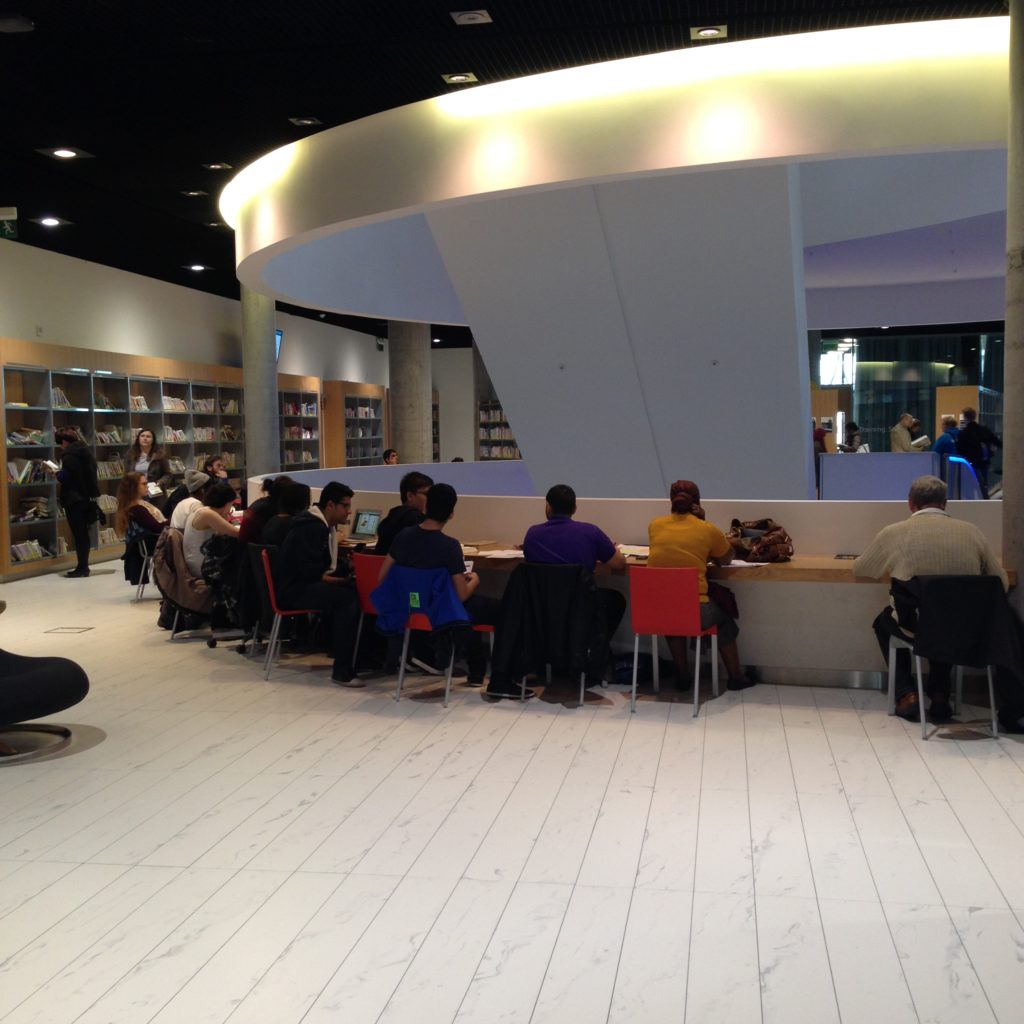
This might be where some of those chairs have got to. I think this is where we start to see some of the gaps in the space emerging. This is a private study area ringing a stairwell. (If you can call it a stairwell when it’s full of blue-glowing escalators.) I’ve seen this in other libraries, and I think it’s really good use of space. Having private study space in a public traffic area but looking outwards (either to the view outside through glass, or into a vast internal space like a central stairway) makes for a really nice happy medium, I think. Lots of people want to work on their own but feel connected to the activity going on around them rather than in total silence. This kind of space provides that, and also provides a kind of dampening effect over all. When people come up the escalator, they see the patrons with their noses down working, and that’s a cue to lower your voice.
But you’ll see those red chairs, the ones I’m pretty sure don’t belong there. They’ve been dragged over from other areas, and the boys are sitting together. They’re sort of working together, but the space isn’t really allowing for it. You can see they’ve shoved their chairs back a bit in an attempt to create a space for more than one. They’d probably rather be at a place like this to work:
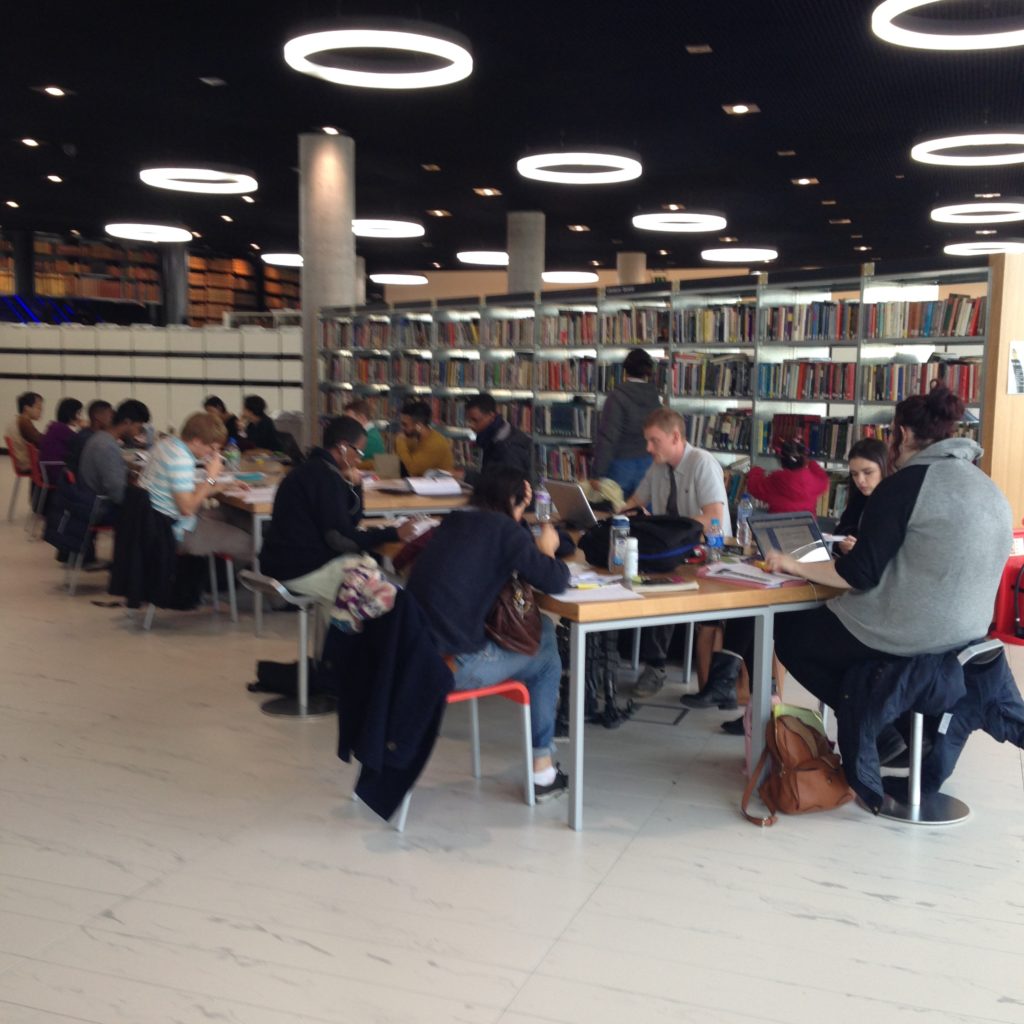
But it’s full up. And to be honest, quiet as a tomb. This space, in spite of the “collaborative” look to the tables, is being used as a reading room. Each of these people are working independently rather than collaboratively. And, if you note the stool pulled up to the first table, it’s got a chair problem as well.
Why would that young lady bring a stool that belongs to the bar seating area, and thus is completely the wrong height for the table, to a table where she’d have to crouch over to use her computer? She’s not doing it because there’s a failing in this space. She’s doing it because of a failing in the other areas. She’s there for the power. These are all powered tables. If you’re sitting at one of these tables, you can be sure you’ll be able to plug in. Strangely, in the areas designed for more individual study, the power outlets are only every third or fourth slot.
Maybe this space would be better for collaborating:
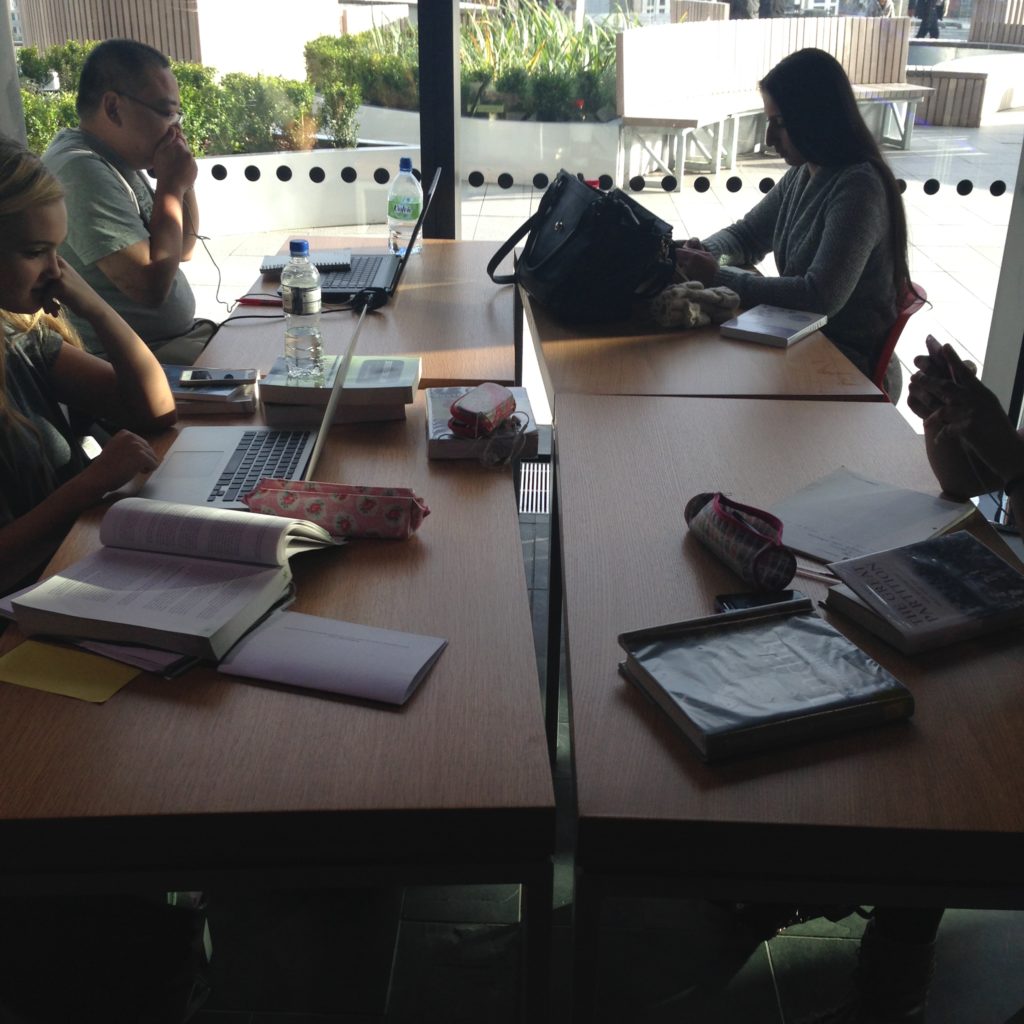
From a distance it looks like one large table, but as you can see, it’s not. These are four individual areas, and they’re being used that way. Individually.
I’ve written previously about the desire to have “flexible” spaces, and tables that break apart goes hand in hand with furniture on casters. But this is what happens; those breaks between the tables are indicators of how much space is yours and how much is mine. So these are private study spaces as well.
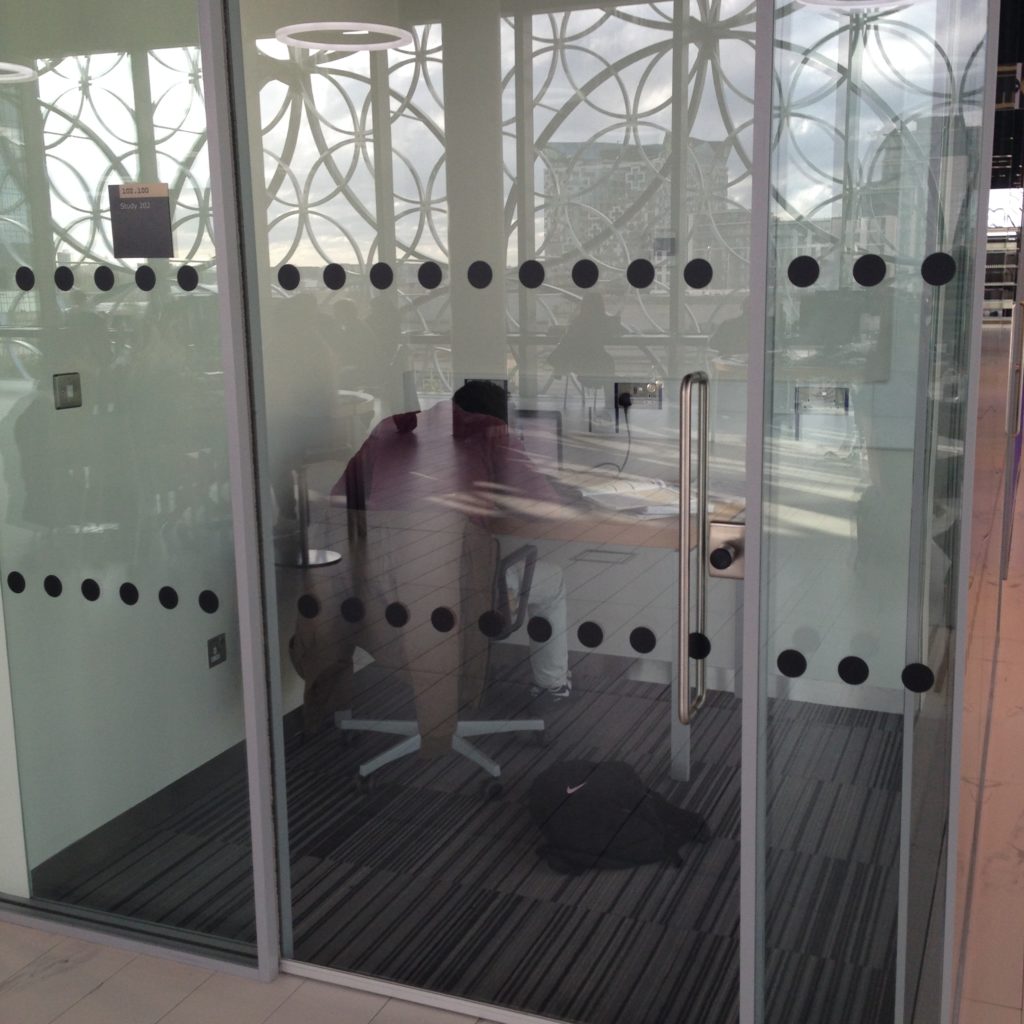
This is the first time i’ve ever seen individual study spaces hived off as study rooms. Each of these little rooms only fits one person. There’s only one chair in each. Given how noisy this library was on the day I visited, I could understand why they’d go out of their way to create silent spaces. And I suppose, if you have the room and the budget, why not? But I was beginning to seriously notice a trend here: almost all the spaces I saw were providing indicators that they were for individual use, even the spaces that were designed to be shareable.
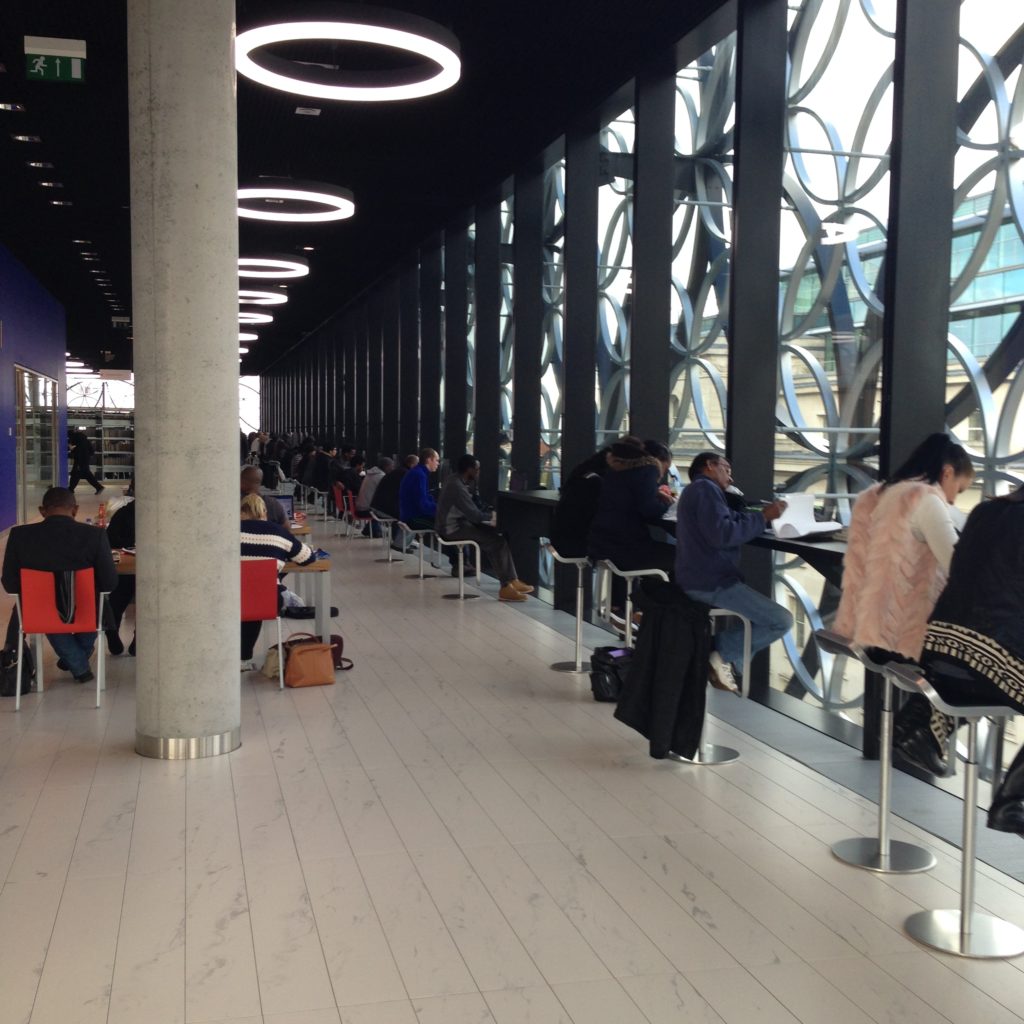
Chairs walking off isn’t an unusual problem, but this library is suffering quite badly from it. You see where those gaps are? Chairs that walked, mostly in the pursuit of power. This is a brand new library, so I’m a bit surprised that there aren’t outlets absolutely everywhere. But they’re aren’t. They’re few and far between, much like the chairs. You have to go on a hunt for it, and then hope there’s a chair there for you as well.
Perhaps a time will come when we won’t need so many outlets. Maybe computers and devices will have batteries that last days or weeks at a time rather than 2-6 hours, tops. We can hope for that, but in the meantime, power may be the single most important service a library can offer to support the use of technology. It’s not computers: remember that pod of computers above that’s unused and unusable because of the absence of chairs. Maybe it just comes down to this: chairs, power, and wifi. That might be enough to make magic happen.
The Library of Birmingham, as beautiful as it is, is showing signs of scarcity of two of those things: power, and chairs.
Over a year ago, I found a stack of study chairs in a hallway at work. I think they were there because they were off to get cleaned, but I needed some extra chairs, so I liberated them and wheeled them into the tech centre. I needed a couple of extra, and there were a few more than that, but I figured it wouldn’t hurt to have a few extra chairs on hand when instructors drop by with their TAs. As it turned out, having extra chairs in the room was outrageously useful. They call pulled out, rolled around, and used by everyone, staff, faculty, and students. Extra chairs are friendly and genuinely flexible. They added a bit more functionality to the space. While at the Library of Birmingham, I realized how valuable it was to see a stack of extra chairs in a space like this. People are essentially expected to fight each other for a place to put their bums. They have to make radical choices, too: computer, or no? Comfort, or no? Power, or no? It’s like Survivor but with chairs. When there’s a scarcity, people will retreat to the most conservative position, and I think that’s what’s happening here. There’s very little collaboration going on, and everyone’s just grateful they can sit down and plug in (if they’re lucky).
I’ve noticed something twice now in non-library settings: extra seating where patrons can grab it. I didn’t get a shot of the extra seating at the Wellcome Collection, but I’ll be back there in a couple of weeks. They’ve got heavy white stools patrons can pull down from their storage area and use wherever they like. The National Portrait Gallery has these:
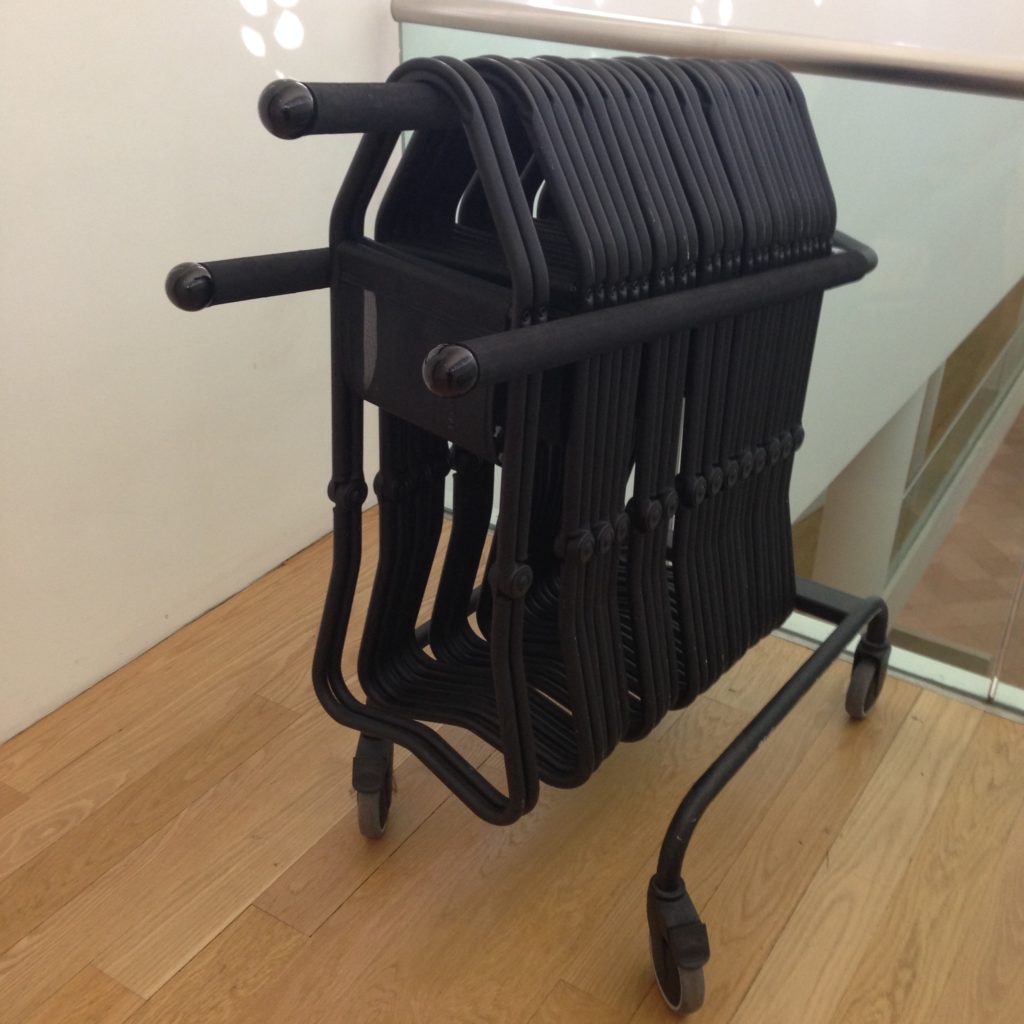
Grab your own stool, walk around with it. Sit down wherever you like. Sit with others, or sit on your own. It’s up to you, because these chairs come with no conditions.
Of course, portable stools like these make sense in an art gallery. It’s quite a nice touch, I think. Galleries are intensely physical spaces that require to you to move through them to experience them. They aren’t tremendously flexible spaces because the art isn’t there to be shifted around by patrons. The flexible bit in an art gallery, primarily, is the patron. But galleries and museums have open and broad spaces for people to fit inside, big vistas of wide corridor, essentially, so why not give patrons slim seating to place where they see fit? The institution doesn’t decide where it’s needed. You do. It’s still the patron fitting herself around the gallery, but in a much more comfortable way.
If I had to give any advice to the Library of Birmingham right now, I would say: take a page from the National Portrait Gallery. Stick extra chairs all over the place. Far too many of them; make it feel like there’s an abundance of chairs. I suspect the space would get used differently if there weren’t a constant low-grade war going over the ability to sit down.